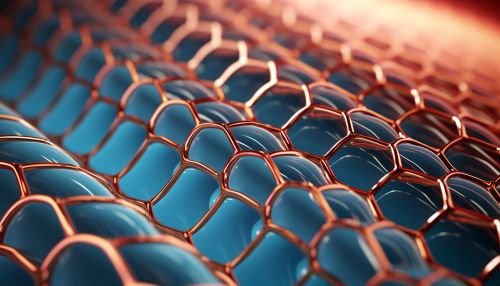Nanofiltration
Introduction
Nanofiltration (NF) is a relatively recent membrane filtration process used most often with low total dissolved solids (TDS) water such as surface water and fresh groundwater, with the purpose of softening (polyvalent cation removal) and removal of disinfection by-product precursors such as natural organic matter and synthetic organic matter. Membrane filtration involves forcing a solvent from a region of high solute concentration through a membrane to a region of low solute concentration by applying a pressure in excess of the osmotic pressure. This process is characterized by the ability to separate solutes of molecular weights greater than 200-400 Daltons.
History
The development of nanofiltration as a membrane process is relatively recent, with the term first being used in the 1980s to describe a membrane with properties that lay between those of ultrafiltration and reverse osmosis. The development of nanofiltration membranes has been driven by the desire to reduce the energy requirements of reverse osmosis (RO) membranes, while still being able to reject divalent ions and small uncharged solutes.
Principle
Nanofiltration is a pressure driven process for separation of soluble ions from water by semi-permeable membrane. It is essentially a liquid phase separation technology. The principle of nanofiltration is similar to that of reverse osmosis, but the two processes differ in terms of the degree of ion separation. While reverse osmosis can remove monovalent ions, nanofiltration is used mainly for the removal of divalent and multivalent ions, which gives it the ability to soften water.
Membrane
The membrane used in nanofiltration has a pore size of about 1 nanometer. The membrane is a thin layer of material capable of separating substances when a driving force is applied across the membrane. The membrane used in nanofiltration is a key part of the process; the membrane's performance will directly affect the quality and quantity of water that can be filtered.
Applications
Nanofiltration is used in various applications, including water and wastewater treatment, food and beverage processing, and pharmaceutical and biomedical applications. In water and wastewater treatment, nanofiltration is used to remove hardness ions such as calcium and magnesium, to reduce the levels of disinfection by-product precursors like natural organic matter and synthetic organic matter, and to remove specific synthetic organic chemicals and pesticides. In food and beverage processing, nanofiltration is used to concentrate food and beverage products such as fruit juices and to remove unwanted components or to reduce the alcohol content in certain beverages. In pharmaceutical and biomedical applications, nanofiltration is used to purify and concentrate therapeutic proteins and to remove viruses from water.
Advantages and Disadvantages
Like any other technology, nanofiltration has its advantages and disadvantages. The main advantages of nanofiltration are that it can operate at lower pressures than reverse osmosis, it can selectively remove hardness ions like calcium and magnesium, and it can effectively remove disinfection by-product precursors. However, nanofiltration also has some disadvantages. The main disadvantages are that it can't remove monovalent ions as effectively as reverse osmosis, it may require more frequent membrane cleaning due to fouling, and it can't achieve the high levels of demineralization that can be achieved with reverse osmosis.


Future Developments
The future of nanofiltration looks promising with the development of new membranes and the discovery of new applications. There is ongoing research into the development of new nanofiltration membranes with improved performance and longer life. There is also ongoing research into the use of nanofiltration for the removal of emerging contaminants from water and wastewater.
